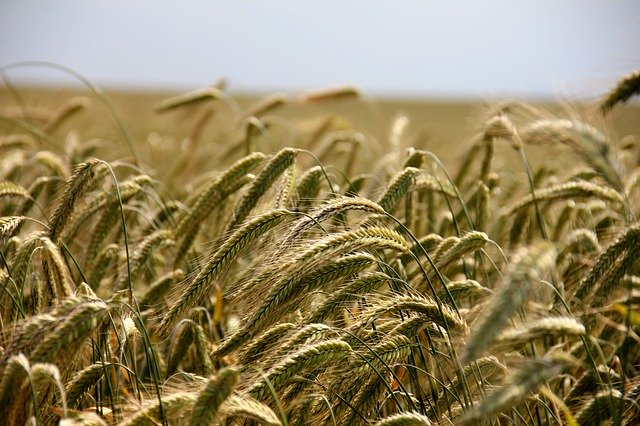In gin the “base” refers to the type of distilled spirit to which the botanicals are later added via distillation.
Unlike other categories of spirits, Gin is unusual in that the definition doesn’t dictate what the base spirit must be distilled from. In other words, Gin may be built off a grape spirit similar to brandy; gin may be distilled with a base spirit distilled from cane or molasses— like rum.
Grain Base Spirits in Gin
Gins distilled from Wheat

Even the term “wheat” itself isn’t a single ingredient. When a distiller makes a wheat base it can be from any number of cultivars.
Historically speaking, wheat was not a common base for gin up until the 20th century. Wheat as a crop needs to be alternated with other crops, and because it is such a useful grain for baking, there was often very little good-quality grain on the market for distillers.
[Reviews of Gins with a base spirit distilled from wheat]
Gins distilled from Barley

Barley Base has an incredibly distinctive flavor on its own. Some people describe barley as having a “funky aroma” when residual character is present. But it’s far more complex. A good barley base has nutty cereal, porridge and bran notes to it but also has a dark earthy complexity to it— you might get notes of grilled mushroom or toasted cocoa nibs. Barley can be a very fascinating base, especially when used for its character and designed around it.
[Reviews of Gins distilled from a base including barley]
Gins distilled from Corn

Many gin distillers are playing with corn as a base. Firstly, because it is easily and widely available. Secondly, if a distillery is also distilling a bourbon— which legally requires at least 51% of the mash bill to be corn— they probably are bringing a great deal of it in.
But thirdly and most importantly— many people choose a corn base because of the taste and texture.
[Reviews of Gins distilled from a base including corn]
Gins distilled from rye

Rye base spirits often require a bit of barley malt to get started. Once it gets going a rye base can be one of the most distinctive and characterful bases a distiller can choose.
Many people describe Rye once distilled and aged as having a slightly sour, slightly peppery character. Neutral rye base spirit can taste even more botanical.
[Reviews of gins distilled from a base of rye]
Gins distilled from grain/neutral grain spirit
Because of some negative associations with neutral grain spirit— or simply because the distiller doesn’t want to disclose the full details of their botanical bill— many gins are simply listed as “distilled from grain.”
Gins distilled from fruit
Gins distilled from grape

Grape Base is particularly complicated, because there are great deal of specific categories that refer to different parts/ways that grape is treated during the distillation process. Gins which feature a grape base could fall into any one of these categories.
[Reviews of gins distilled from grape spirit]
Gins distilled from apple

Many cideries or distilleries from regions where apples are prevalent have been experimenting with an apple base.
Apple base can vary based on the type of apples used and the place where its used. Given their wide variation and distinctive character, many distillers choose to build around the apple base spirit and use its unique character as an asset.
[Gins distilled from a base spirit including apple]
Other common gin bases
Gins distilled from potato

The choice of a potato base— especially one with residual potato spirit character— is not one to take likely. Potato can have a very distinctive and very divisive flavor. Some describe it as “musty,” “dank,” and “unctuous.” This is because potatoes have a great deal of impurities that can come out during the distillation process.
But when properly done, Potato base spirit has a rich, thick, almost fatty texture that is unlike what you can get from any other grain.
[Gins distilled from a base spirit including potato]
Gins distilled from sugar cane

Cane and cane byproducts are what many rums are distilled from. Therefore a gin that uses a cane base is sometimes referred to as a “rum-like” gin.
Many gins that start from a cane base are distilled in regions where sugarcane is a major crop. Think traditional rum-producing regions such as the Caribbean, South America and southeast Asia.
[Gins distilled from a base spirit including sugar cane]
Gins distilled from whey/milk

Whey is a surprising waste product at creameries, but it’s also fermentable. Many dairy producers have partnered with distilleries to find a market for their waste. Whey vodkas have become more common in the late 2010’s and therefore, whey gins have become more common too.
[Gins distilled from a base of whey]
